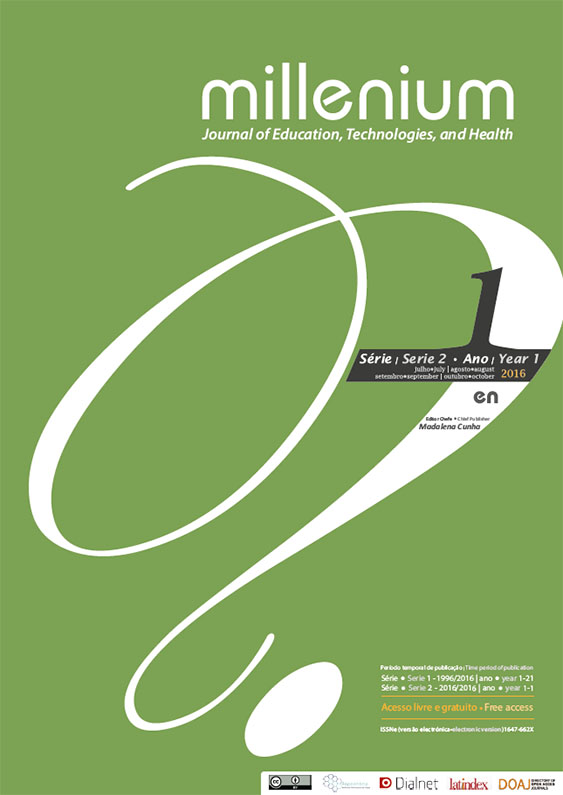Physiological dynamics of heart rate variability: a statistical modeling approach in vasovagal syncope
DOI:
https://doi.org/10.29352/mill0201.03.00049Keywords:
vasovagal syncope, heart rate, mixed modelsAbstract
Introduction: The transitory loss of conscience and postural tone followed by rapid recovery is defined as syncope. Recently has been given attention to a central mediated syncope with drop of systemic pressure, a condition known as vasovagal syncope (VVS).
Objectives: The analysis of Heart Rate Variability (HRV) is one of the main strategies to study VVS during standard protocols (e.g. Tilt Test). The main objective in this work is to understand the relative power of several physiological variables - Diastolic and Systolic Blood Pressure, (dBP) and (sBP), Stroke Volume (SV) and Total Peripheral Resistance (TPR) in Heart Rate Variability (HRV) signal.
Methods: Statistical mixed models were used to model the behavior of the above variables in HRV. Data with more than one thousand and five hundred observations from four patients with VVS were used and previously tested with classical spectral analysis for basal (LF/HF=3.01) and tilt phases (LF/HF=0.64), indicating a vagal predominance in the tilt period.
Results: Statistical models reveal, in Model 1, a major role in dBP and a low influence from SV, in the tilt phase, concerning HRV. In Model 2 TPR disclose a low HRV influence in the tilt phase among VVS patients.
Conclusions: HRV is influenced by a set of physiological variables, whose individual contribution can be assessed to understand heart rate fluctuations. In this work, the use of statistical models put forward the importance of studying the role of dBP and SV in VVS.
Downloads
References
Aydin, M. A., Salukhe, T. V, Wilke, I., & Willems, S. (2010). Management and therapy of vasovagal syncope: A review. World
Journal of Cardiology, 2(10), 308–15. http://doi.org/10.4330/wjc.v2.i10.308
Fonseca-Pinto, R. (2011). A New Tool for Nonstationary and Nonlinear Signals: The Hilbert-Huang Transform in Biomedical
Applications. In Biomedical Engineering, Trends in Electronics, Communications and Software. InTech. http://doi.
org/10.5772/12871
Fonseca-Pinto, R., Ducla-Soares, J. L., Araújo, F., Aguiar, P., & Andrade, A. (2009). On the influence of time-series length in EMD
to extract frequency content: Simulations and models in biomedical signals. Medical Engineering and Physics, 31(6),
–719.
Ganzeboom, K. S., Colman, N., Reitsma, J. B., Shen, W. K., & Wieling, W. (2003). Prevalence and triggers of syncope in medical
students. American Journal of Cardiology, 91(8), 1006–1008. http://doi.org/10.1016/S0002-9149(03)00127-9
Hon, E. H., & Lee, S. T. (1963). Electronic evaluation of the fetal heart rate. VIII. Patterns preceding fetal death, further
observations. American Journal of Obstetrics and Gynecology, 87(February), 814–26. Retrieved from http://www.ncbi.
nlm.nih.gov/pubmed/14085784
Laird, N. M., & Ware, J. H. (1982). Random-effects models for longitudinal data. Biometrics, 38(4), 963–74. Retrieved from http://
www.ncbi.nlm.nih.gov/pubmed/7168798
Ljilja, A., Mišmaš, A., Adamec, I., & Habek, M. (2013). Neurally mediated syncope. Neurologia Croatica, 62(1-2), 3–10. http://doi.
org/10.1016/B978-0-12-386525-0.00070-6
McCraty, R., & Royall, S. (2015). Science of the Heart, Volume 2: Exploring the Role of the Heart in Human Performance: Rollin
McCraty Ph.D., Sandy Royall: 9781513606361: Amazon.com: Books. (HeartMath Institute, Ed.). Retrieved from https://
www.heartmath.org/research/science-of-the-heart/
Moya, A., Sutton, R., Ammirati, F., Blanc, J. J., Brignole, M., Dahm, J. B., … Zamorano, J. L. (2009, November). Guidelines for the
diagnosis and management of syncope (version 2009). European Heart Journal. http://doi.org/10.1093/eurheartj/
ehp298
Parry, S. W., & Kenny, R. A. (1999a). The management of vasovagal syncope. QJM : Monthly Journal of the Association of
Physicians, 92(12), 697–705. http://doi.org/10.1093/qjmed/92.12.697
Parry, S. W., & Kenny, R. A. (1999b). Tilt table testing in the diagnosis of unexplained syncope. QJM : Monthly Journal of the
Association of Physicians, 92(11), 623–629. http://doi.org/10.1093/qjmed/92.11.623
Pinheiro, J. C., & Bates, D. M. (2000). Linear Mixed-Effects Models: Basic Concepts and Examples. In Mixed-Effects Models in S
and S-PLUS (pp. 3–56). New York: Springer-Verlag. http://doi.org/10.1007/0-387-22747-4_1
R Core Team, R. (2014). R: A language and environment for statistical computing. Vienna: R Foundation for Statistical Computing.
Retrieved from http://www.r-project.org/
Seco, A., Felgueiras, M., Fdez-Riverola, F., & Pereira, A. (2011). Elder Care Alert Management - Decision Support by a Logistic
Regression Model, 9–16. http://doi.org/10.1007/978-3-642-19931-8_2
Seco, A., & Vieira, C. (2014). A Multi-agent Supply Chain Simulation Analysis through a Statistical Mixed Model. Procedia
Technology, 16, 163–171. http://doi.org/10.1016/j.protcy.2014.10.079
Tarvainen, M. P., Niskanen, J.-P., Lipponen, J. A., Ranta-aho, P. O., & Karjalainen, P. A. (2014). Kubios HRV – Heart rate variability
analysis software. Computer Methods and Programs in Biomedicine, 113(1), 210–220. http://doi.org/10.1016/j.
cmpb.2013.07.024.
Downloads
How to Cite
Issue
Section
License
Authors who submit proposals for this journal agree to the following terms:
a) Articles are published under the Licença Creative Commons (CC BY 4.0), in full open-access, without any cost or fees of any kind to the author or the reader;
b) The authors retain copyright and grant the journal right of first publication, allowing the free sharing of work, provided it is correctly attributed the authorship and initial publication in this journal;
c) The authors are permitted to take on additional contracts separately for non-exclusive distribution of the version of the work published in this journal (eg, post it to an institutional repository or as a book), with an acknowledgment of its initial publication in this journal;
d) Authors are permitted and encouraged to publish and distribute their work online (eg, in institutional repositories or on their website) as it can lead to productive exchanges, as well as increase the impact and citation of published work
Documents required for submission
Article template (Editable format)





